The pros and cons of living in Nakagin Capsule Tower, an architectural marvel in Tokyo
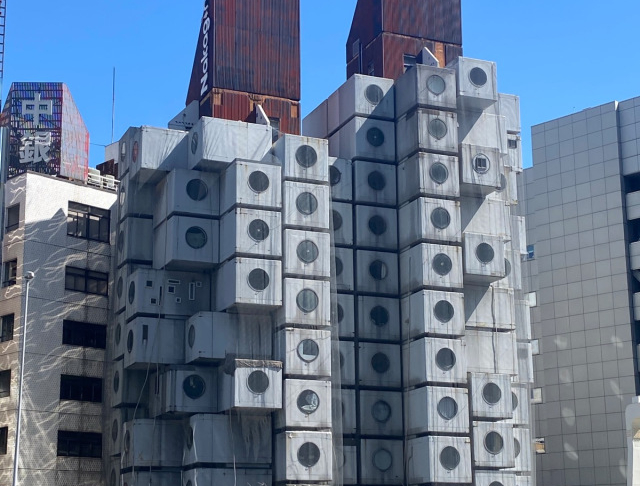
We move into a capsule apartment in the iconic landmark, and find out it’s not all it’s cracked up to be.
Tokyo is just as well-known for its ancient shrines and temples as it is for its bright, modern neon screens, but there are a lot of buildings in the city that sit in between these disparate time frames.
Nakagin Capsule Tower is one such building, glistening as a futuristic marvel of modern architecture and catching everyone’s eye with its unusual cubic design when it was first erected in 1972. Now, 49 years after it first sprang to life, the ageing building, which houses 140 self-contained prefabricated capsules, faces the threat of being demolished, after the majority of capsule owners voted to tear the complex down in 2007 and replace it with a more modern tower.
▼ Nakagin Capsule Tower was designed by Japanese architect Kisho Kurokawa
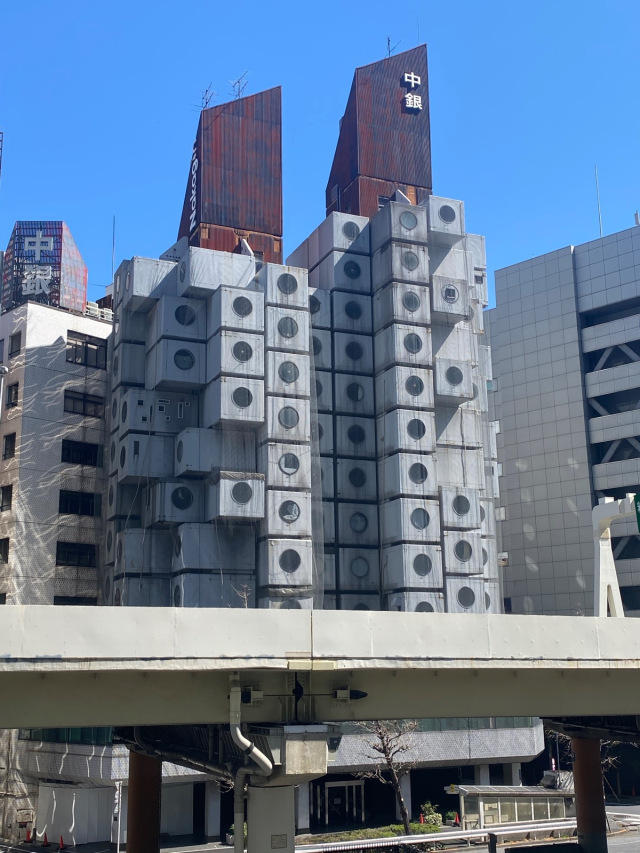
After Kurokawa opposed the demolition, and suggested instead that the prefabricated capsules inside the complex be replaced with more modern ones, plans were stalled and Masato Abe, a capsule owner who once lived in the building, founded the “Save Nakagin Tower” project.
As part of its preservation plans, the “Save Nakagin Tower” project has been leasing around 30 capsule apartments to the public on a monthly basis since 2018. However, these monthly stays were temporarily closed recently, which came as sad news to our Japanese-language reporter Chie Nomura, who had been waiting to rent one of these apartments. She managed to get in contact with Tatsuyuki Maeda, a representative from the organisation, to let him know her desire to live in the tower, and after a few days passed, she was thrilled when he called her back to let her know an apartment had become available.
▼ Nomura has long been a fan of the alternate-world-retro-sci-fi-looking building.

So Nomura gathered a month’s worth of essentials together and made her way to the twin towers, located conveniently close to Shimbashi Station and within walking distance of the fashionable Ginza district.
▼ The entrance to the Nakagin Capsule Tower Building looks a little run-down, but that’s part of its charm.
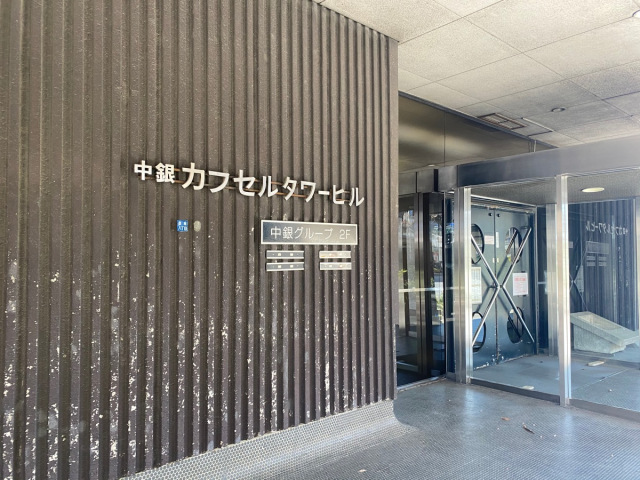
Standing at the entrance, Nomura looked up and realised she’d never viewed the building from this angle before. She loved its unusual silhouette and thought it would be a shame if a building like this were to hit the dust and be replaced with a cold, characterless building.
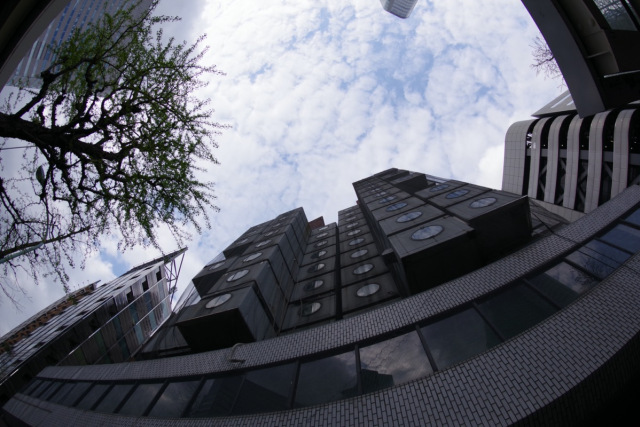
It didn’t take long for Nomura to be shown to her room, and as soon as she stepped into the prefabricated capsule, she was pleased to find it was everything she’d hoped it would be.
▼ The room looked like a spaceship, and the star of the show was the unique circular window.
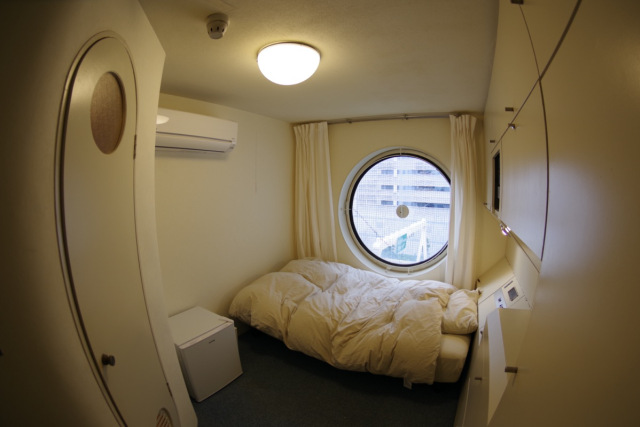
It certainly wasn’t big, but that was to be expected from a capsule apartment, and Nomura wasted no time in unpacking the box of goods she’d brought with her to help her settle in for a month in the room.
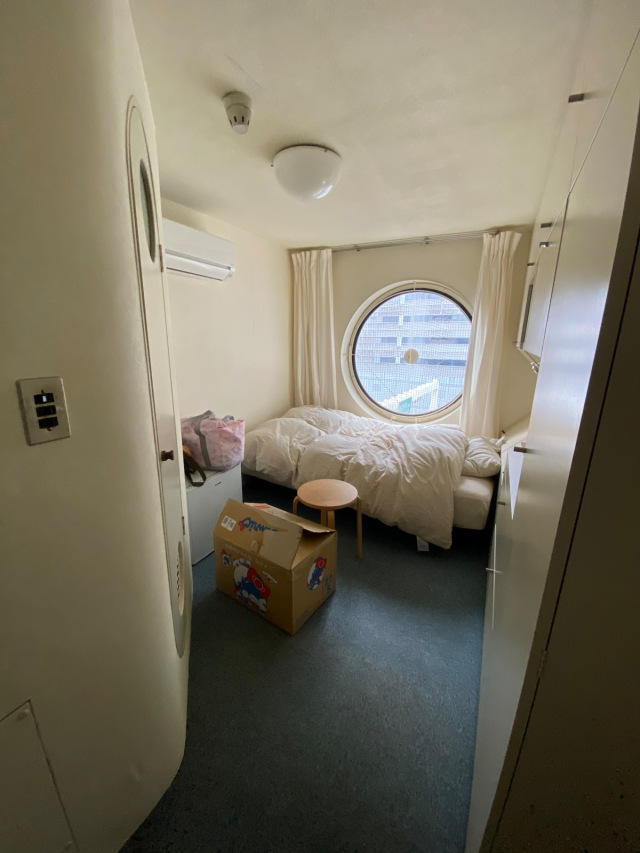
▼ Nomura’s essentials included a few of her favourite soft plushies to keep her company.
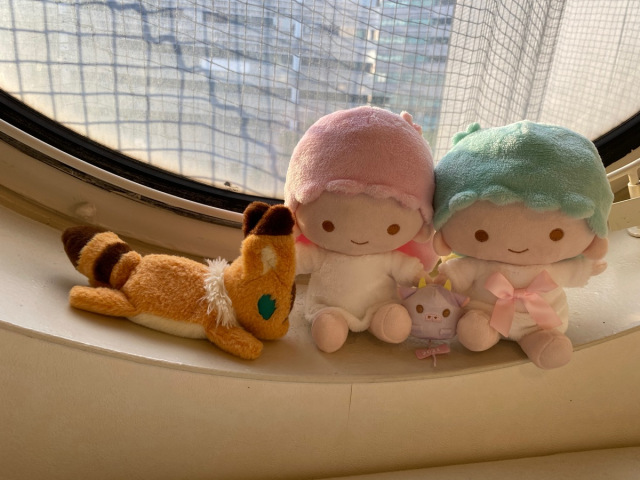
The retro vibe here was strong, extending to the original introductory booklet which Nomura found on a side table inside the room. According to the information in the booklet, the Nakagin Capsule Tower Building actually consists of two interconnected cement towers, one 11 stories high and the other 13, with prefabricated capsule “plugs” that can be used as residences or offices.
▼ The original idea was to provide Tokyo office workers with a place to stay during the week to avoid long commutes back home.
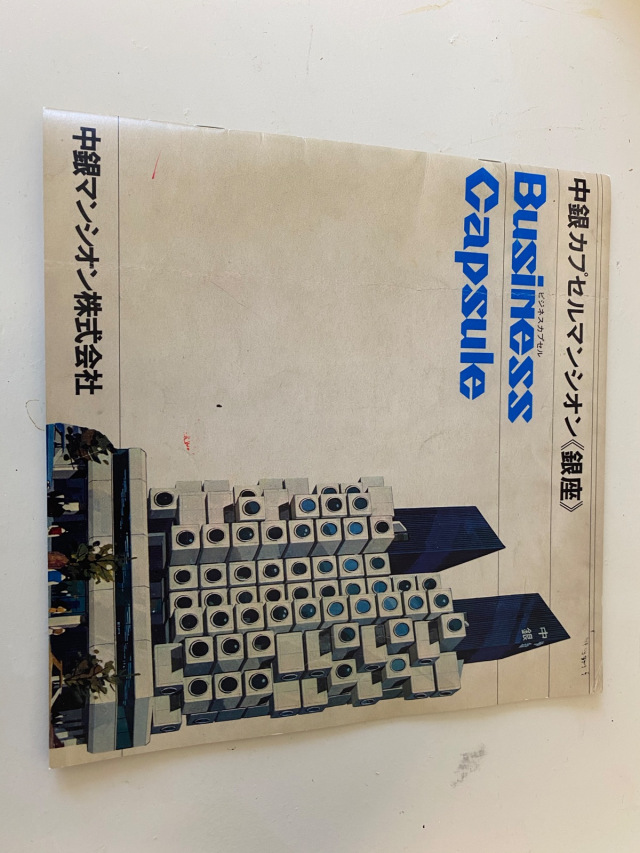
After spending a few days in her apartment, Nomura discovered it came with a variety of pros and cons, so let’s take a look first at the upsides of living in the iconic tower. Of course, the top reason for staying here is the convenient location and the chance to step back in time and enjoy the retro atmosphere inside an architecturally respected landmark in Tokyo.
▼ This image, of another apartment inside the tower, shows a room that most closely resembles the original when it was completed in the ’70s.
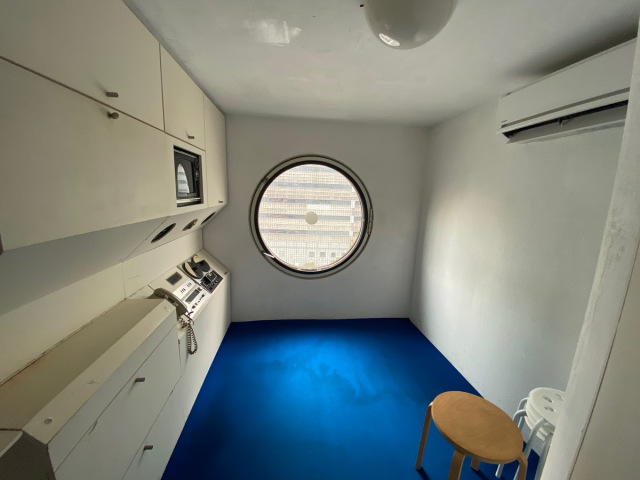
One of the most iconic aspects of the building is the round windows that adorn each cube. Nomura loved the design aesthetic, and spent a lot of time gazing out of that round window from the cosy comfort of her bed.
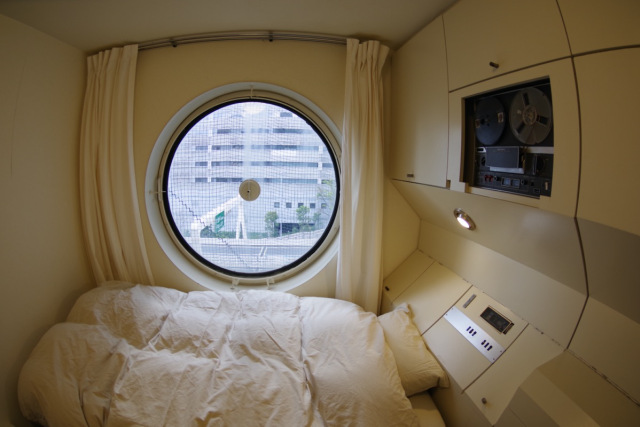
▼ The wall storage system is incredibly retro, with a desk that conveniently pulls down when you need to use it…
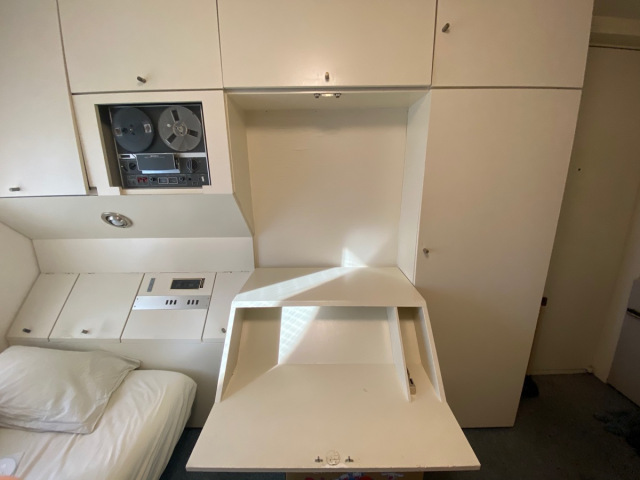
▼ …And the door on the right conceals a closet with a good-sized mirror.

And what about this Sony reel-to-reel tape recorder? These were a high-end way to play and record music in the ’60s and ’70s, and although this one didn’t seem to work when Nomura fiddled with it, she was fascinated to see it was still included in all the rooms.
▼ It’s not every day you get to stay in a room with a built-in open-reel recorder from the ’70s.
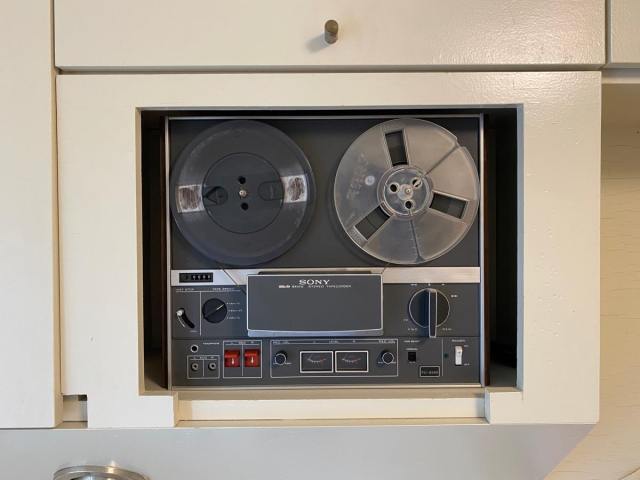
▼ The rounded door to the bathroom was also a retro lover’s dream.
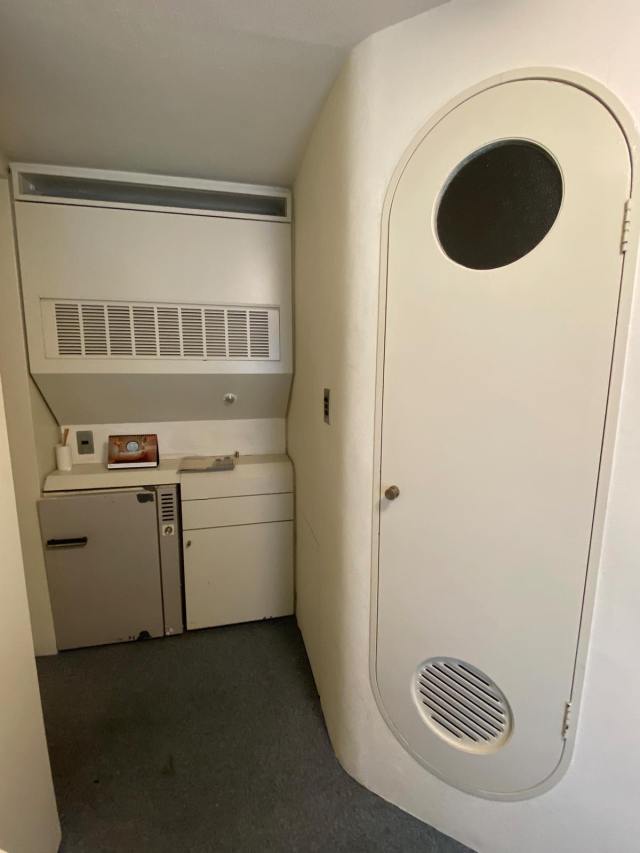
While the upsides to her stay were the prestige of staying inside the complex, the convenience of its location, and its gorgeous retro design, the room isn’t without its pitfalls. The most obvious downside is the fact that there’s no kitchen inside the room (portable gas stoves aren’t allowed either as open fires are prohibited) and the bar fridge (seen in the photo above) doesn’t work, which means you’ll be eating out or dining in on ready-made store-bought meals during your month-long stay.
Perhaps the biggest inconvenience, however, is the fact that hot water to the rooms was shut off in 2010 after one of the water pipes burst in the building. That means there’s no hot water in the bathroom, but there is a shared shower room on-site so you won’t have to stink the place out for a month.
▼ No running hot water might be a pain in winter, but it isn’t so bad in summer
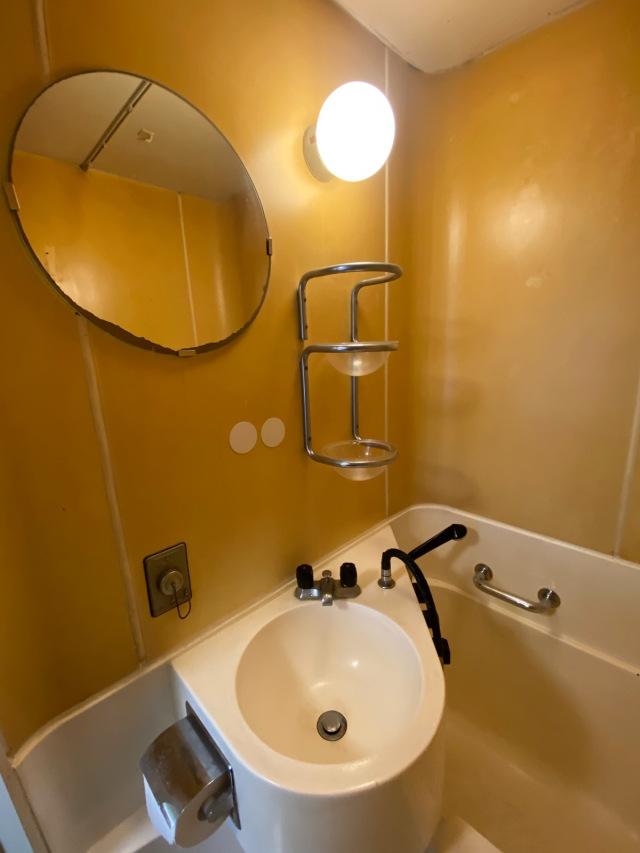
▼ The bathroom still works fine, and is pretty cute to boot.
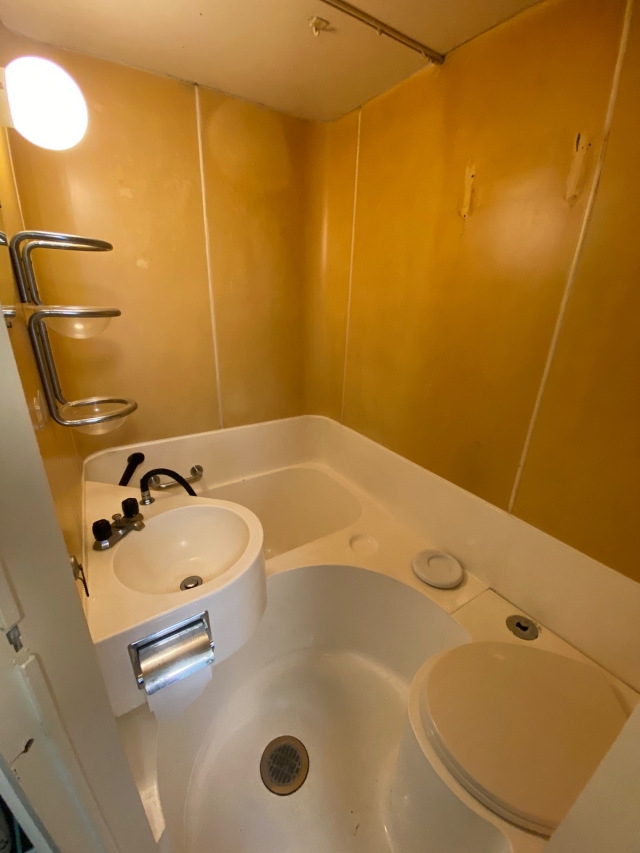
There are also no washing machines in the building, so Nomura would have to use a laundromat outside the complex to wash her clothes during her stay. According to Google Maps, the nearest laundromat was a 16-minute walk away, but she was up for the adventure.
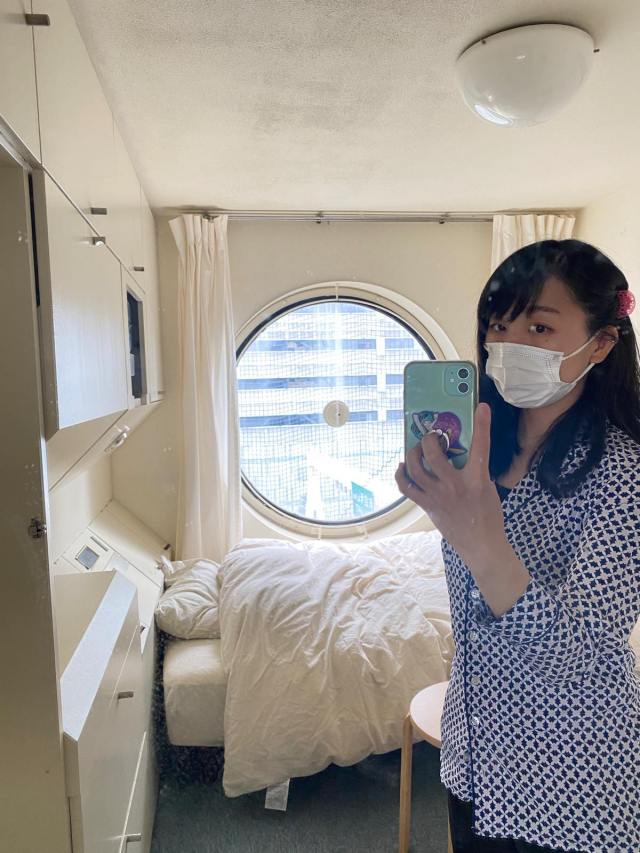
Nomura is only a few days into her stay at the moment, so she’ll be updating us with her final verdict on her experience once she checks out of the tower in a few weeks’ time.
▼ Until then, she’ll be perfecting her Instagram poses in front of that iconic window and living her best ’70s bohemian life.
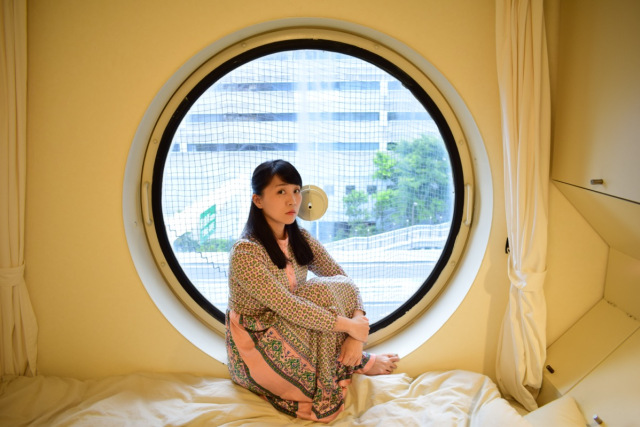
Stays in the 10-square-metre (107-square-foot) rooms are priced at 120,000 yen (US$1,070), which works out to roughly 4,000 yen a night, making the capsule apartments much more affordable than standard hotel rooms in the city.
While the rooms aren’t available to rent at the moment, there’s a high likelihood they’ll become available in the near future, so you too can live the high life like Nomura. Watch this space for her next update, which will include tips for those considering a stay there, and more information on the fate of the building, which is currently on tenterhooks.
Information
Nakagin Capsule Tower Building / 中銀カプセルタワー
Address: Tokyo-to, Chuo0ku, Ginza 8-16-10
東京都中央区銀座8-16-10
Website
Photos ©SoraNews24
● Want to hear about SoraNews24’s latest articles as soon as they’re published? Follow us on Facebook and Twitter!
